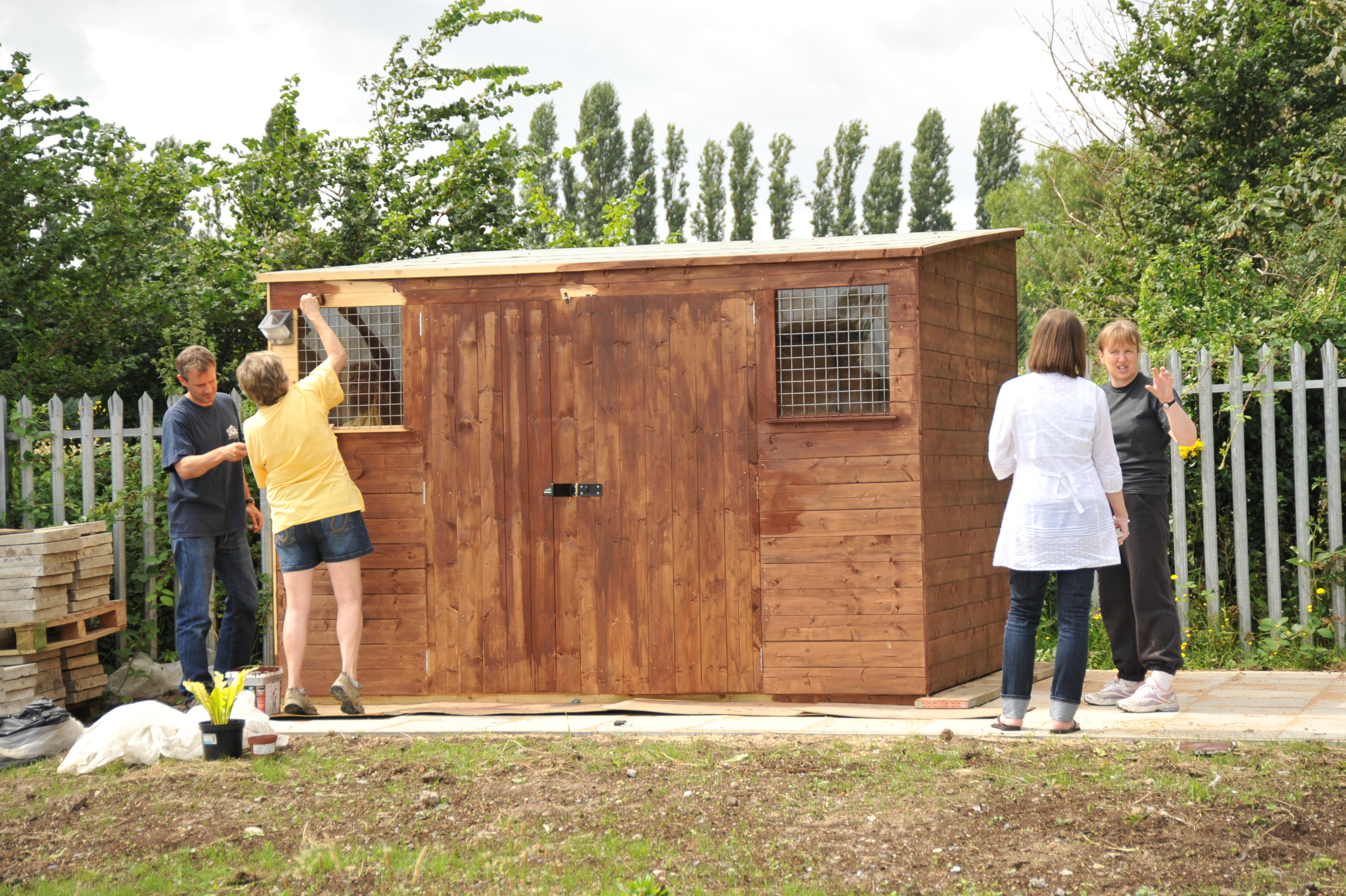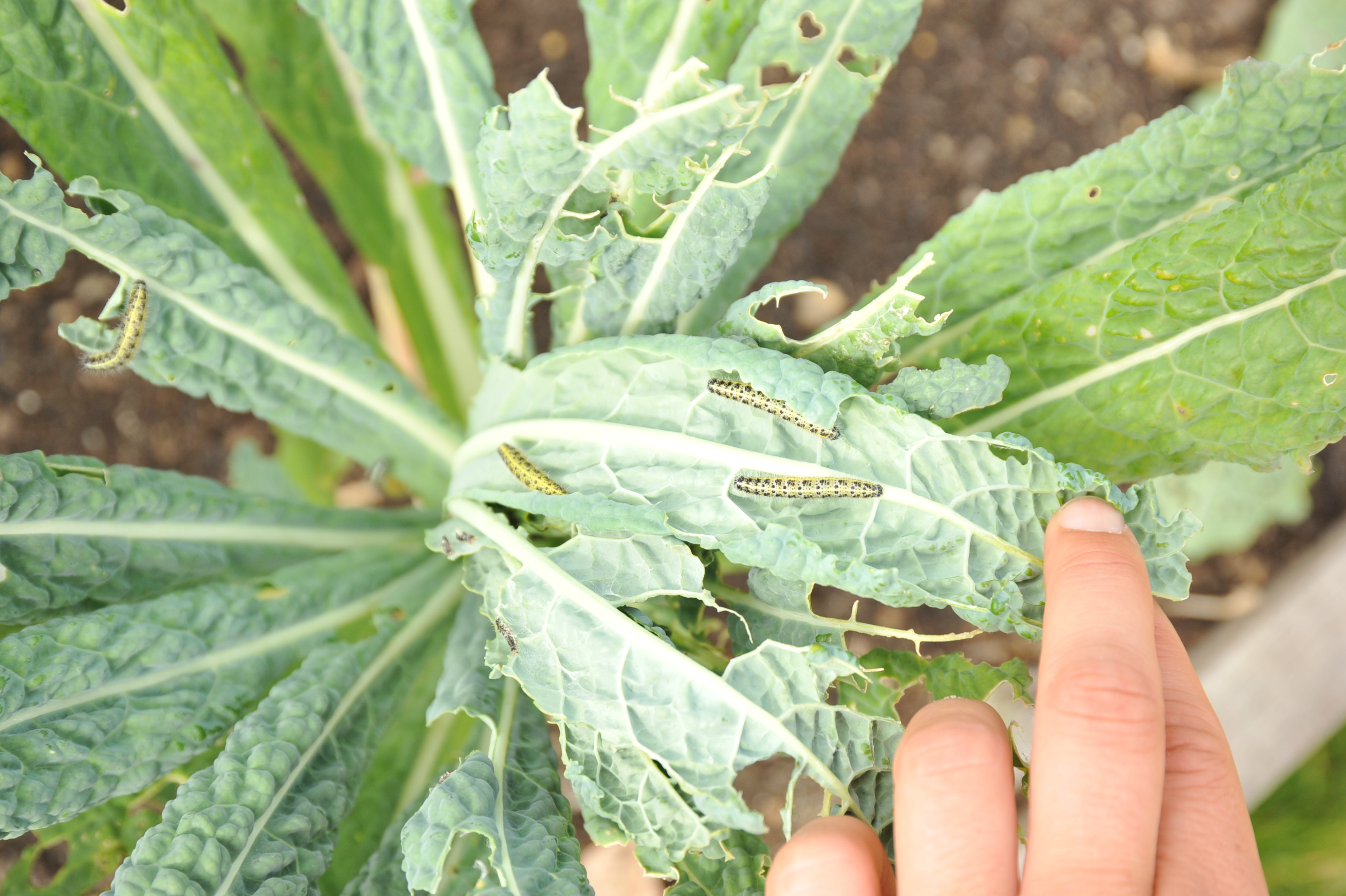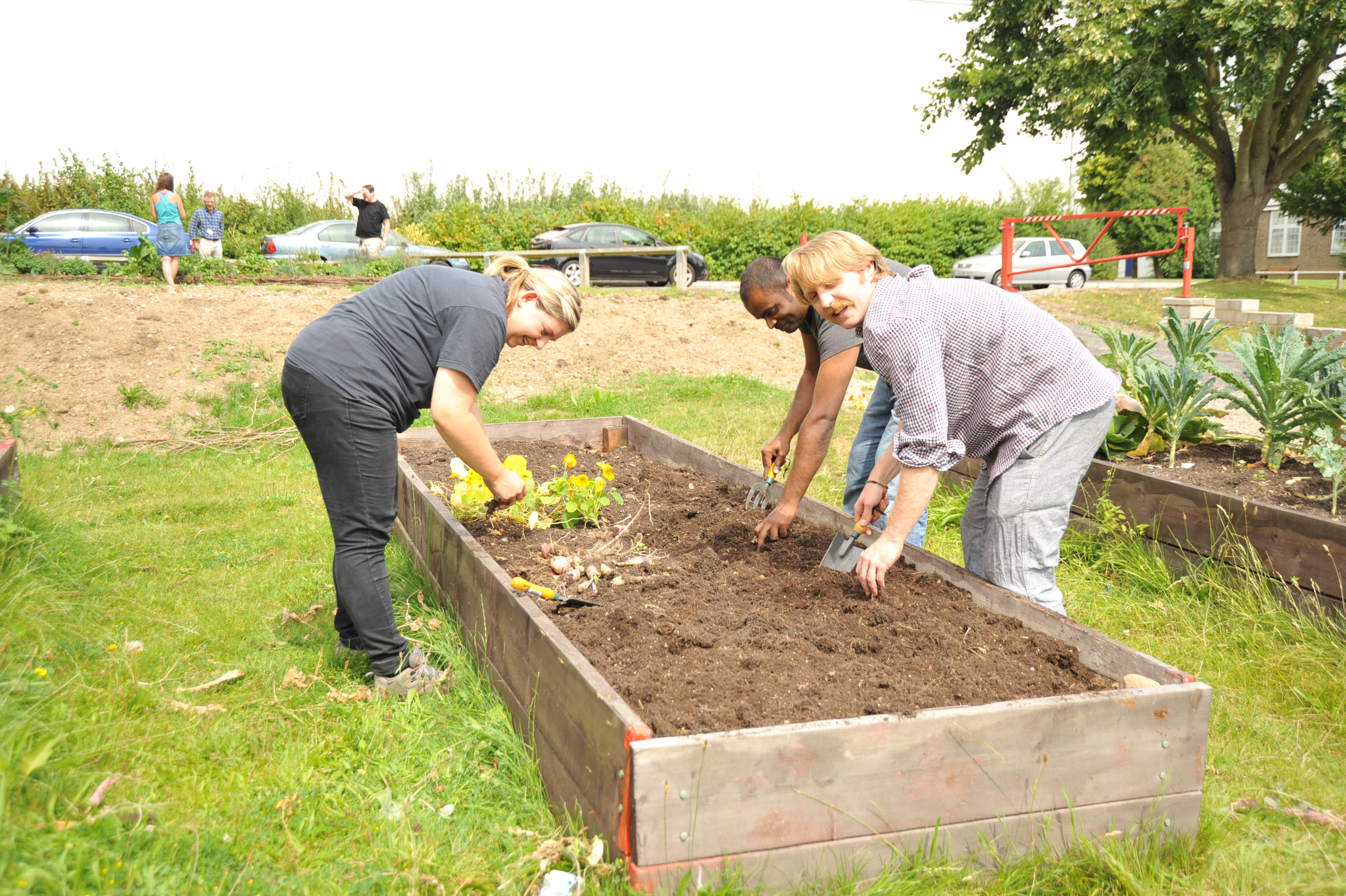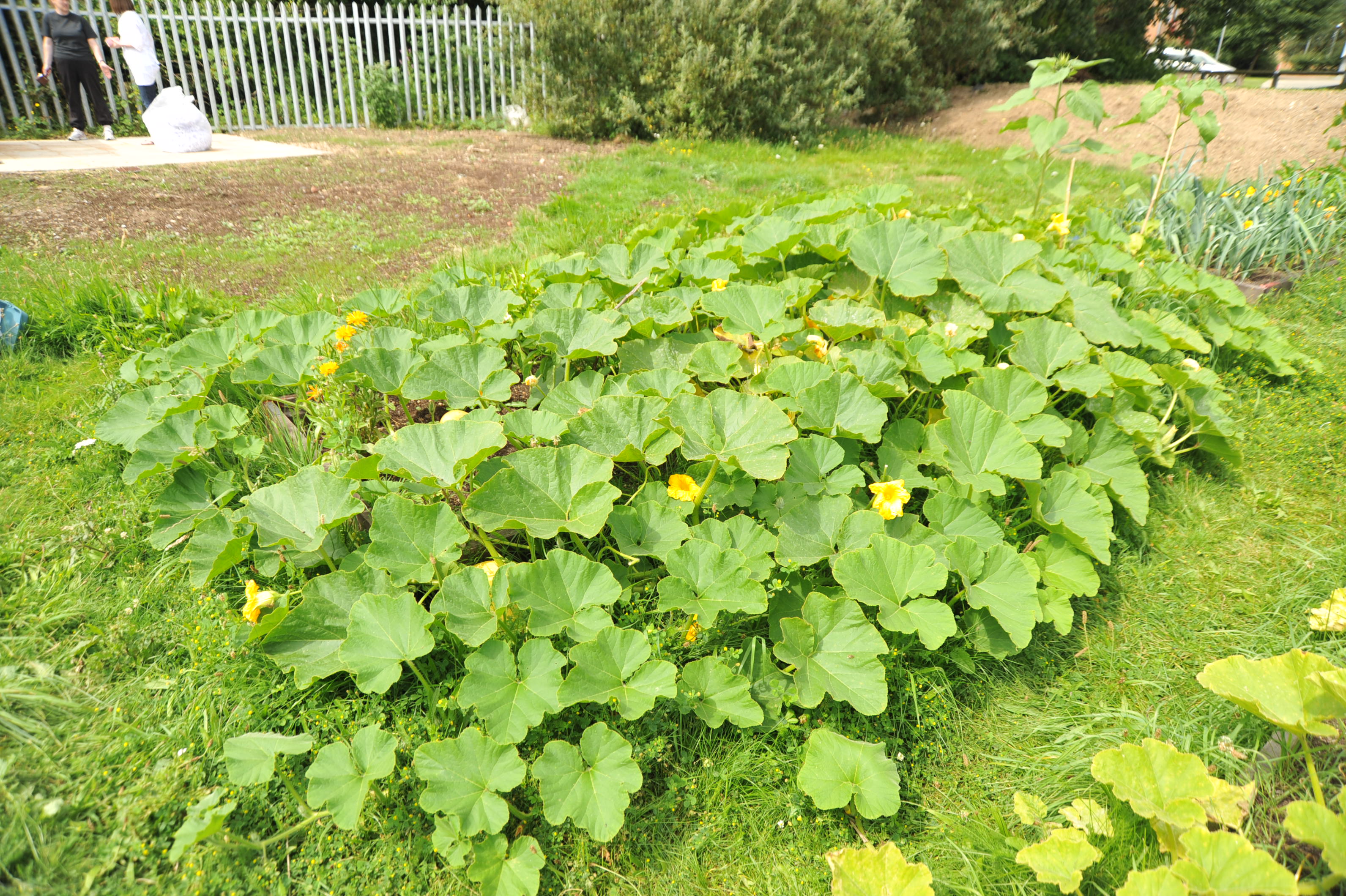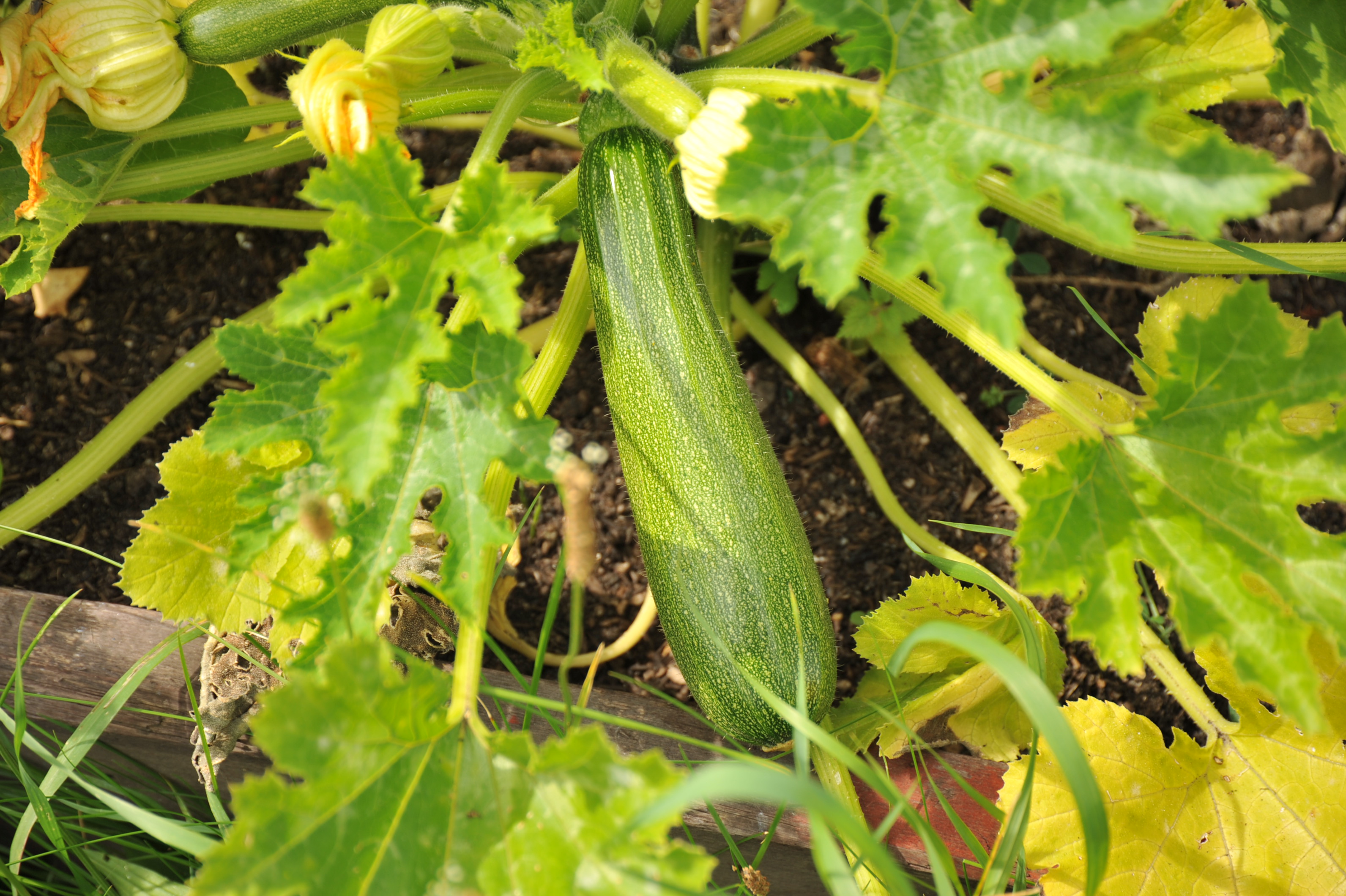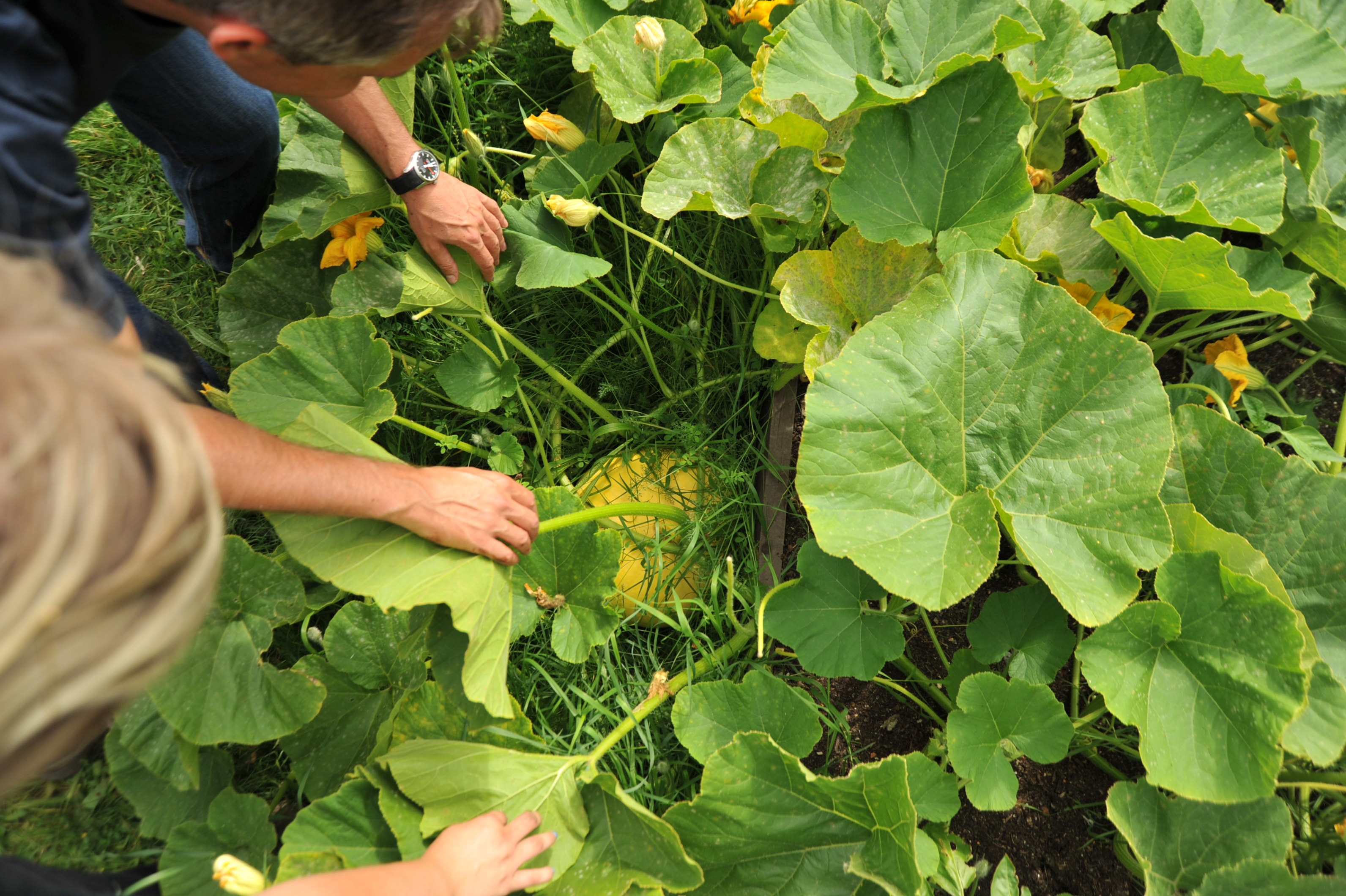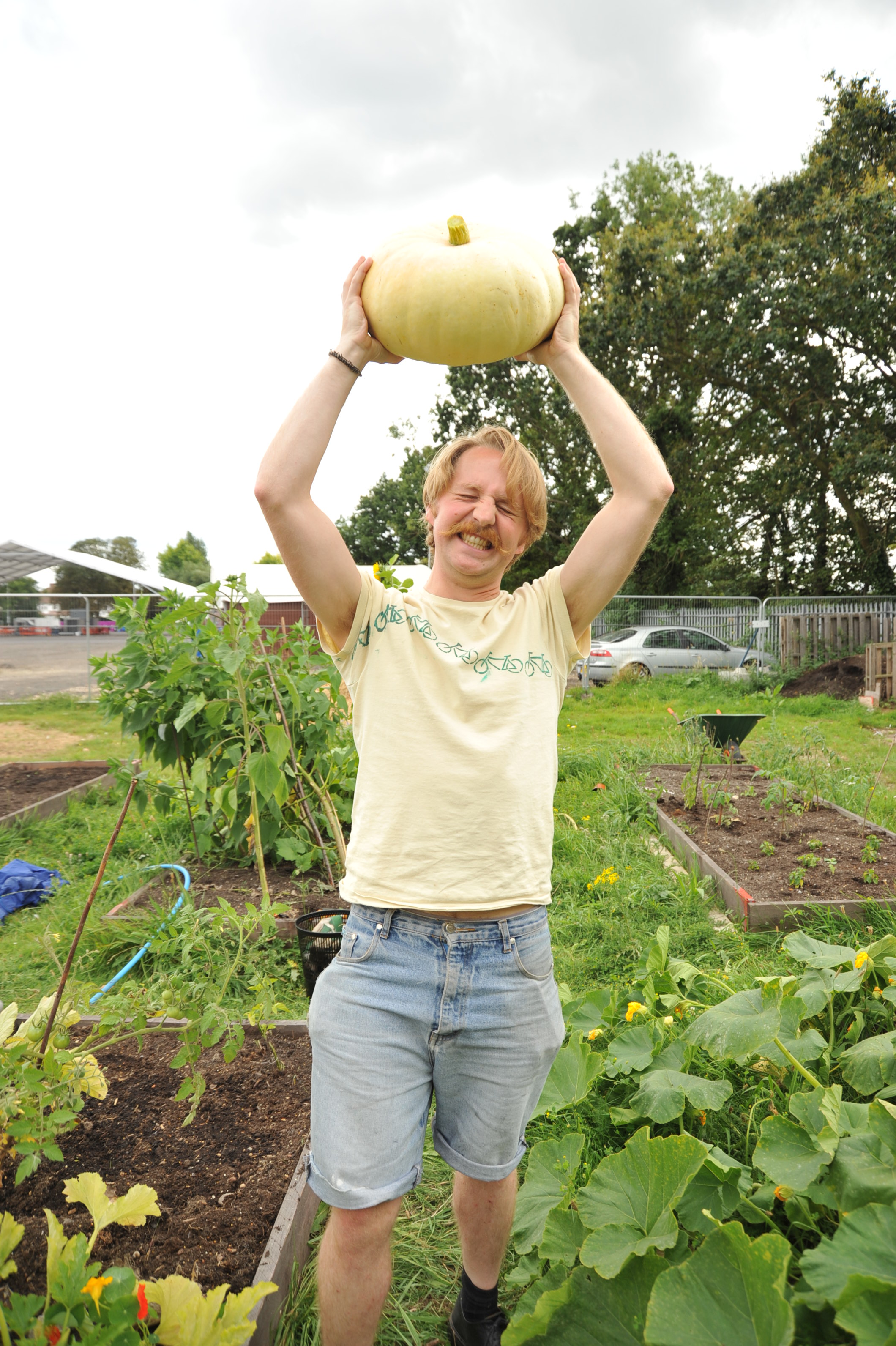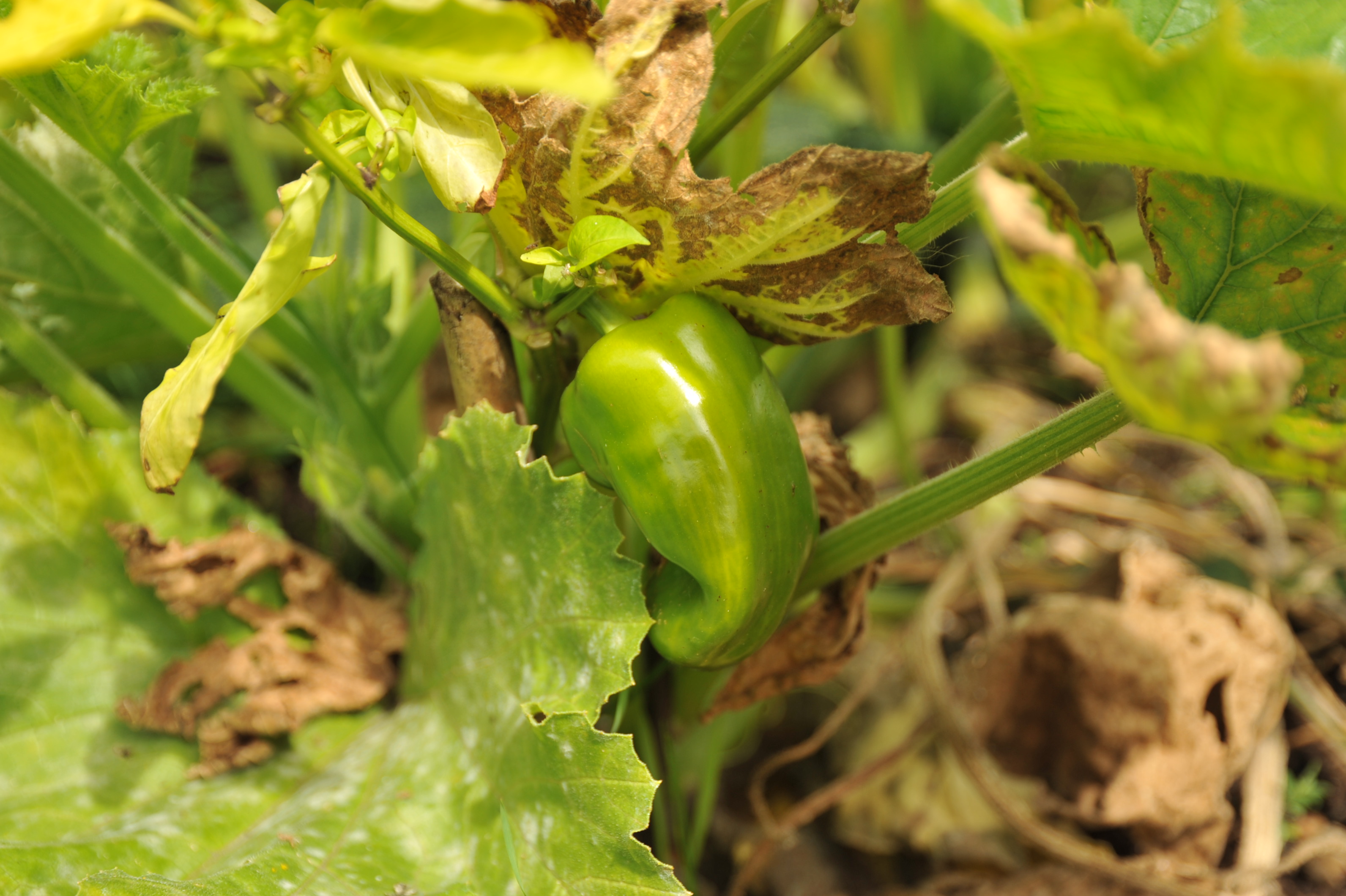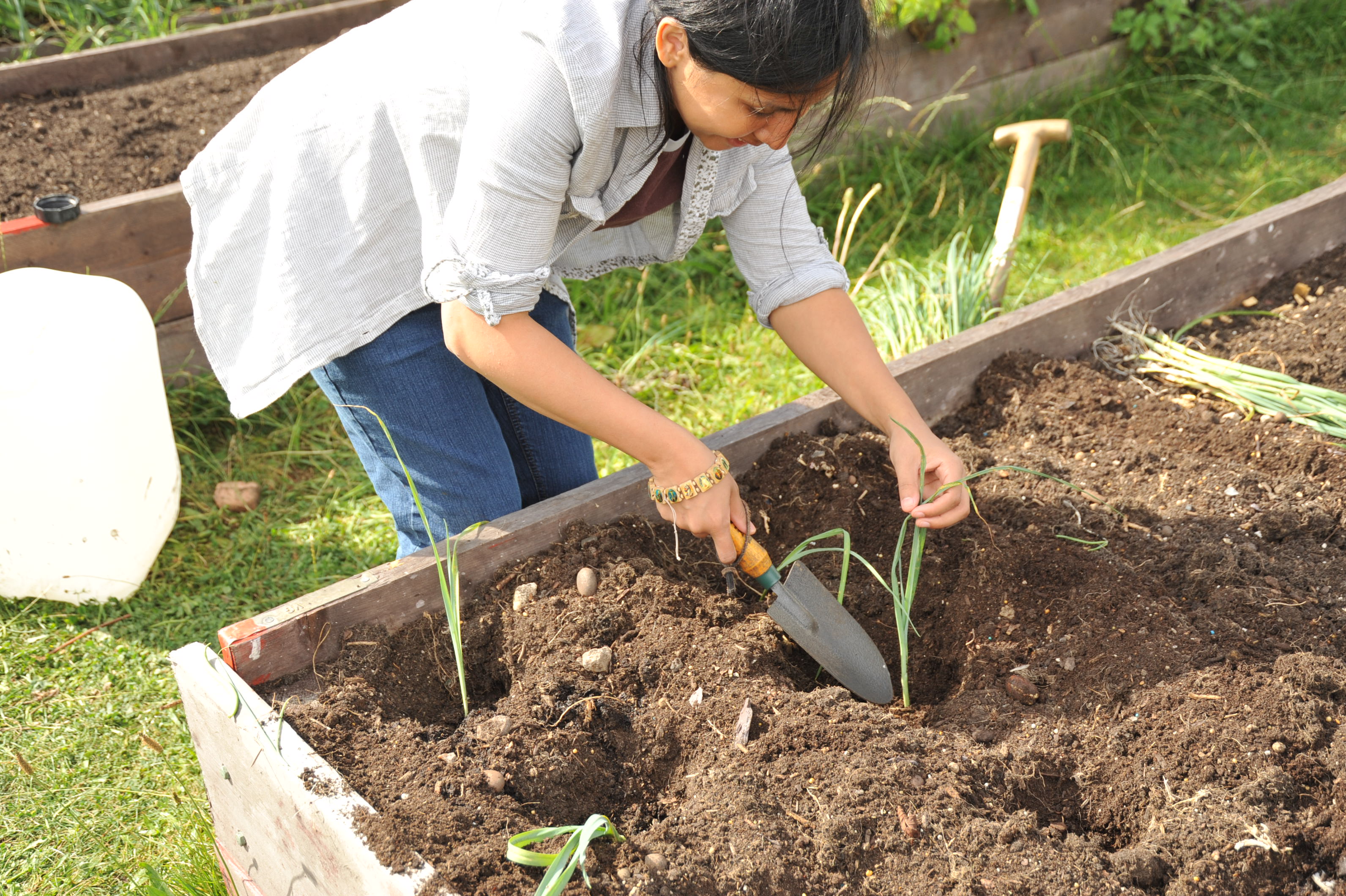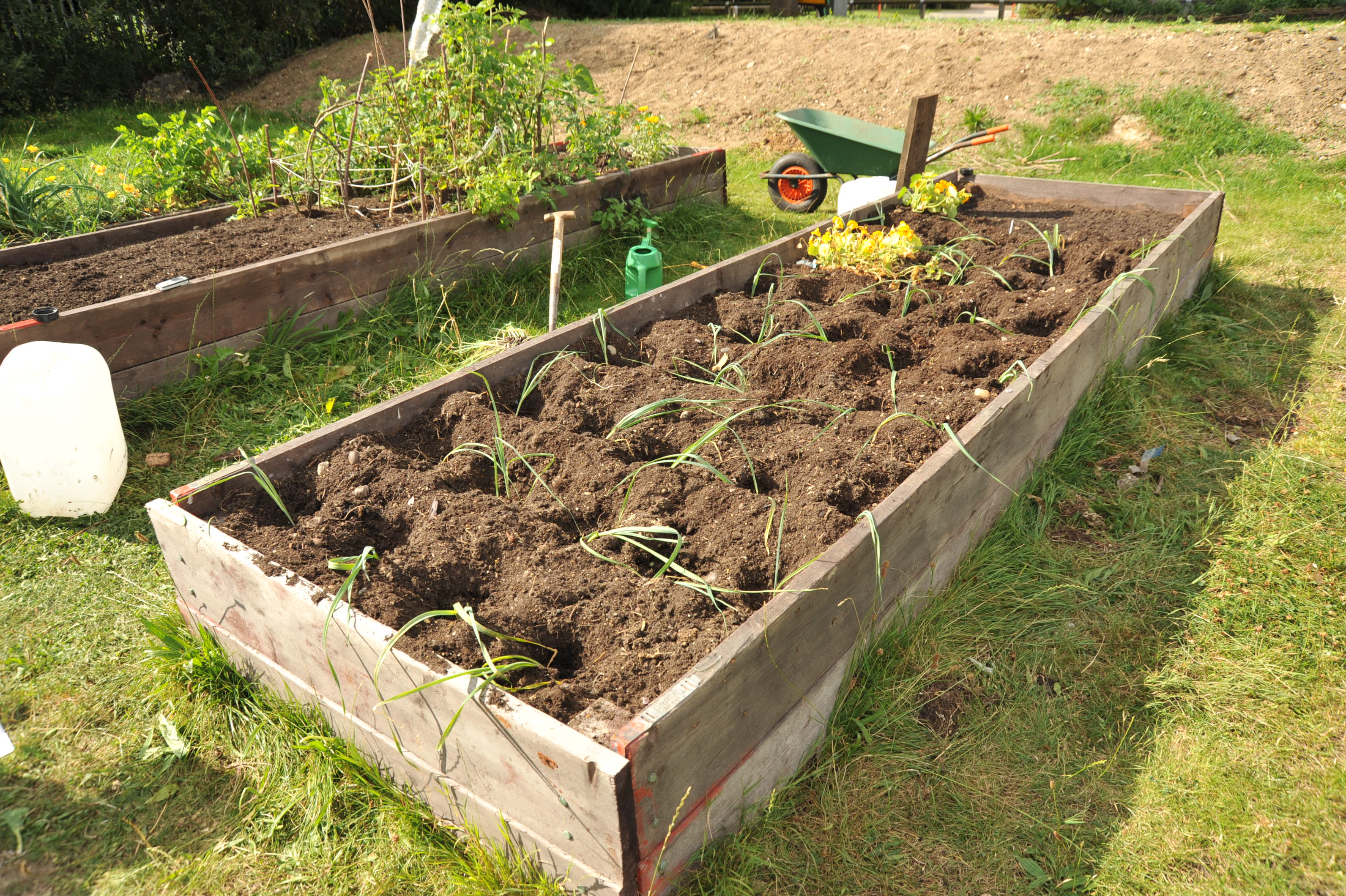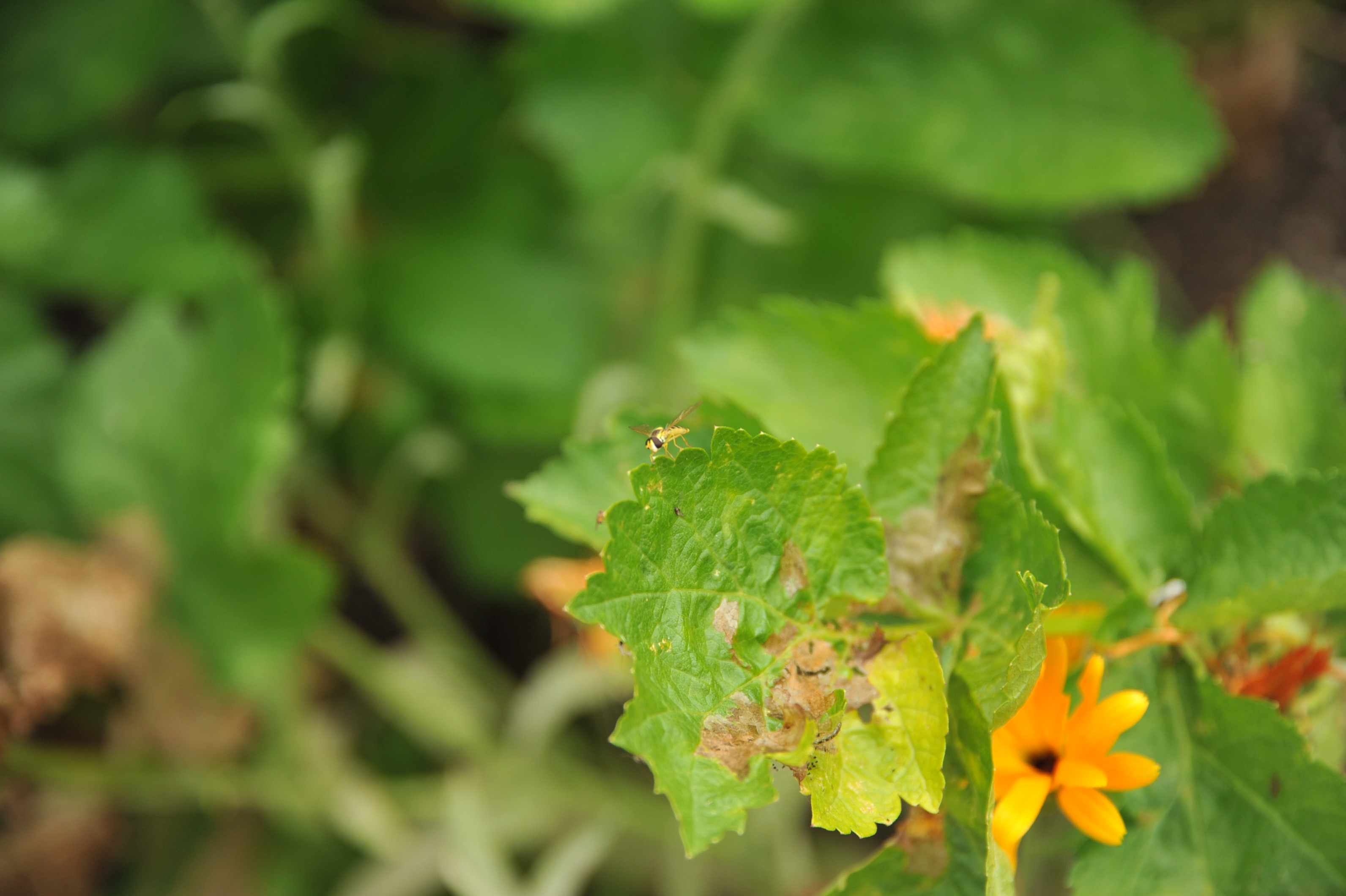Our community garden at the Avery Hill campus continues to progress and expand! We now have a beautiful shed where we keep our tools:
Over the course of the last few week some of the Brassicas crops were badly attacked by nasty cabbage caterpillars. These are often found in large clusters and are easily spotted thanks to their distinctive yellow and black patterns (they can grow up to 2 inches!). Plants should be examinated regularly to prevent the damage or gown under fine mesh netting to stop butterflies laying eggs. Beneficial wasps are particularly effective at controlling these pests, or else they can be picked off by hand. Unfortunately we had to remove some badly damaged plants, such as cabbage and radishes.
In the meantime, all of the cucurbits are growing particularly vigorous, they require a lot of space and therefore are expanding out of the bed:
The resuts are some delicious courgettes, pumpkins and squashes coming in different varieties and shapes:
This summer the weather has been particularly wet and tomatoes and peppers have struggled but are now slowly ripening:
We also harvested our first carrot!
We also decided to experiment a bit and sow some peas where potatos and tomatoes used to be. In a rotation system, leguminosae plants (such as peas) follow the “heavy feeders” plants (such as tomatos) which use up a lot of the nutrients in the soil: peas roots in fact will fix nitrogen, promoting soil fertility. August is probably not ideal time to sow peas because they often struggle in cold wet soil – we might have to grow them under cloches. However we hope the weather will be relatively mild until October – just like last year – and even if the plants will not produce many pea pods, they will still function as green manure that improve soil fertility.
We also transplanted some young tiny leeks into another bed:
As a general rule, when transplanting young plants it is important to minimize root damage: for this reason we should always handle them by the leaves and try to keep as much soil on the roots as possible.
Before transplanting, we first made 6 inches deep holes, 8 inches apart in the bed; we watered well the group of leeks, these were then divided one by one with the help of a fork; each leek was dropped into a hole and watered in order for the soil to gently settle around the roots.
And finally, some beneficial wildlife: a hoverfly






